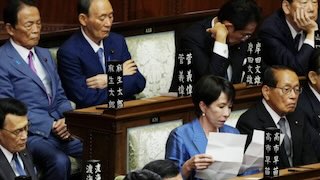Jul 10 (Nikkei) - Japan's ruling coalition won the majority of seats contested in Sunday's upper house election, with counting still ongoing in some districts. But while citizens validated Prime Minister Fumio Kishida's government, the mood among the victors was mostly joyless, as the vote came just two days after the assassination of former leader Shinzo Abe.
The ruling Liberal Democratic Party and its smaller partner Komeito together secured more than half the 125 available seats, according to Nikkei projections.
Meanwhile, the largest opposition group, the Constitutional Democratic Party of Japan (CDP), struggled to expand support, while another opposition group, Nippon Ishin (the Japan Innovation Party) was poised to increase its seats.
Voting closed at 8 p.m. Turnout stood at 30.61% as of 7:30 p.m. In addition to this, 18.6% of voters had carried out early voting by Saturday.
As the results streamed in, Kishida arrived at the LDP's headquarters in Tokyo just before 10 p.m. After his arrival, LDP members held a silent prayer in memory of the party's longtime standard bearer Abe, who was shot to death while stumping for an upper house candidate on Friday.
Source: Kyodo















